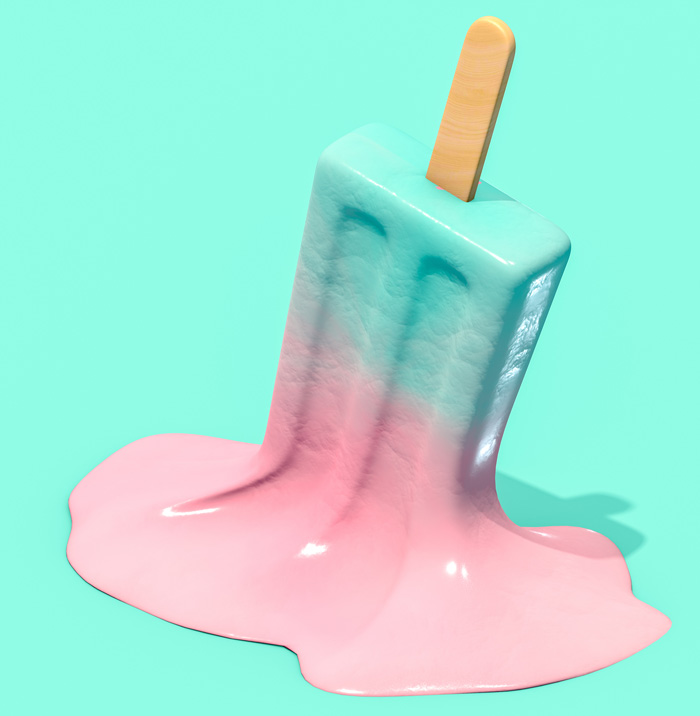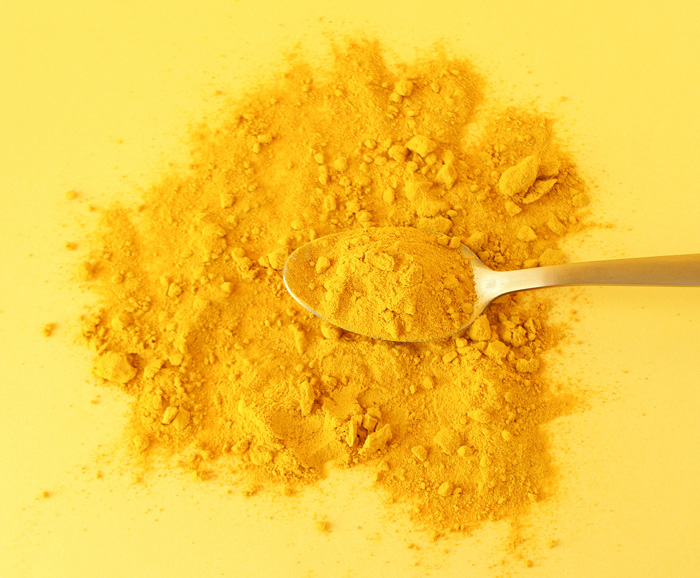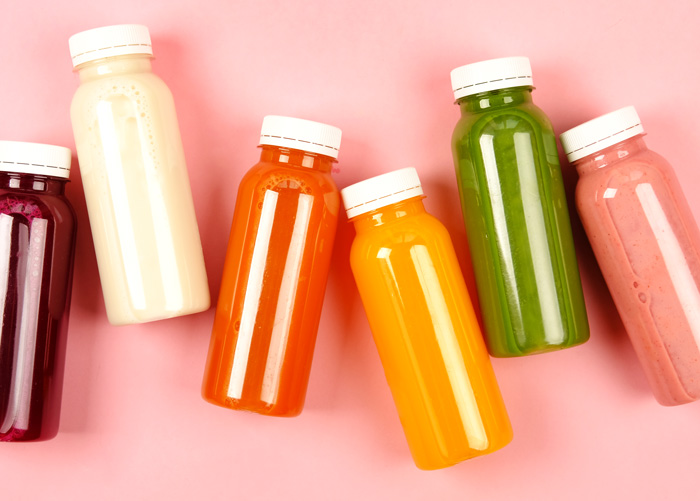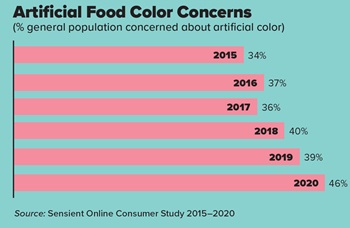Natural Selections: Clean Label Colors Edge Out Synthetics
Ingredients | APPLIED SCIENCE
An expanding palette of natural hues is coloring palate-pleasing foods and beverages around the world.
Driven by consumer concerns about personal health and the health of the planet, the global natural food colors industry is projected to hit $17 billion in sales by 2031, according to Fact.MR, a market research firm. That’s a compound annual growth rate (CAGR) of more than 7%, compared with a 4% CAGR between 2016 and 2020. Anthocyanin, which imparts red color, tops the list for natural food color sales with a 6% CAGR.
Today, more than 80% of colored food and beverage launches annually use natural colors, says Sensient Food Colors marketing specialist Meghan Fox. That’s a shift during the past few years from a strong majority of the color market being synthetic. Jeannette O’Brien, vice president of GNT USA, notes that “FMCG Gurus research shows that 71% of Americans now consider it important or very important that coloring used in food and drink is natural.” In fact, natural flavors and ingredients are second only to product safety when it comes to the factors that shoppers say are most important in deciding which foods and beverages to purchase, reports Innova Market Insights.
“Mintel data confirms our observations that in North America, natural colors are being used across the board, especially in fresh and packaged bakery, sauces and seasonings, dairy, and snacks,” says Fox.
Research and technology advancements are aimed at producing more stable and intense natural colors from plants, minerals, and animals, such as the recent discovery of auronidin coloring pigments in liverwort plants and the development of butterfly pea flower extract, the first plant-derived natural blue color source to be approved by the U.S. Food and Drug Administration (FDA). Two of the newest natural color launches are made from turmeric and spirulina, GNT’s EXBERRY Shade Jade Green (bright bluish green) and Shade Lime Green (yellowish green), which can be used for products including dairy, confectionery, and decorative coatings for bakery and dairy.
Blue Notes
Bright blue has long been the holy grail of natural food colors. Today, spirulina and butterfly pea flower extract are pushing vibrant hues to the forefront of natural greens, blues, and purples:
Spirulina, a microscopic freshwater blue-green alga, was approved by the FDA to color food in 2013. Since then, this heat- and pH-sensitive phycocyanin color has been used in applications such as candy, ice cream, and confectionery. Researchers are working on resolving stability issues.
“There has been a significant increase in spirulina interest in recent years,” says Jeannette O’Brien, vice president of GNT USA. “We expect blue and green to make a major impact in beverages in the near future.”
Butterfly pea flower extract received FDA approval in fall 2021 for categories including sport drinks, carbonated soft drinks, fruit drinks, fruit and vegetable juices, alcoholic beverages, dairy drinks, teas, gums, candy, coated nuts, ice creams, and yogurt. Native to equatorial Asia, it is heat, light, and acid stable.
“This is a huge advancement for the natural color industry, which previously did not have an FDA-approved acid- or heat-stable blue option,” says Meghan Fox, marketing specialist at Sensient Food Colors, which filed the petition to add butterfly pea flower extract to the list of approved color additives in the United States.
Where Do Natural Colors Come From?
Red
Anthocyanins
Betanin (beetroot)
Carminic acid (cochineal)
Carotenoids
Pink
Betanin (beetroot)
Orange
Carotenoids
Green
Chlorophylls/Chlorophyllins
Yellow
Carotenoids
Curcumin (turmeric)
Riboflavin
Blue
Anthocyanins
Spirulina (alga)
Purple
Anthocyanins
Brown
Caramels (melanoidins)
Black
Carbon black (carbonized vegetable material)
Source: Natural Food Colours Association (NATCOL)
Natural Color Formulation Concerns
Cost. Synthetic colors often are less expensive to produce, making natural color options a more expensive choice in some cases.
Heat. Thermal processing may be an issue for some natural colors that are heat sensitive.
Light. Turmeric, which can fade when exposed to light, is an example of a light-sensitive natural color. This can impact packaging selection for the final product.
pH. Some natural colors, such as anthocyanins, turn into different colors when pH changes, so the final pH of the product must be factored into formulation.
Oxidation. Ingredients that will cover larger surface areas, such as dried seasonings, may be subject to oxidation that can impact natural color tones.
Learning Objectives
1. Know the size and growth rate of the natural colors market.
2. Review the history of food colors.
3. Get an update on new natural food colors.









